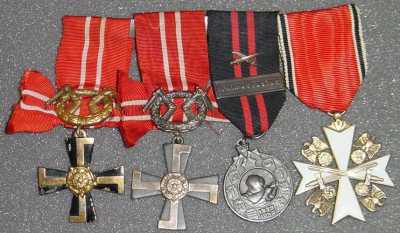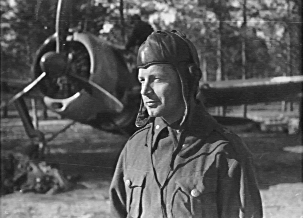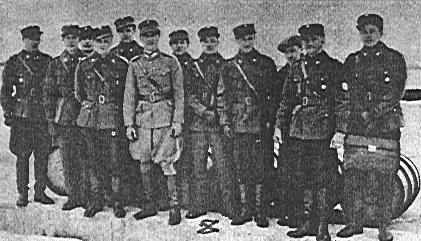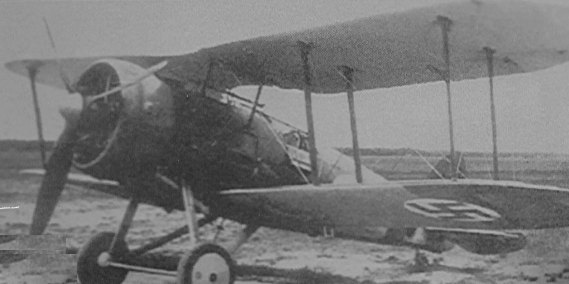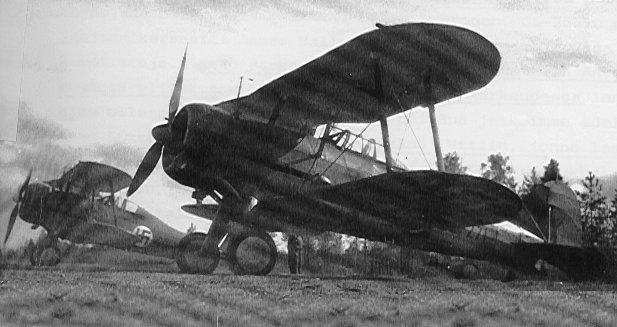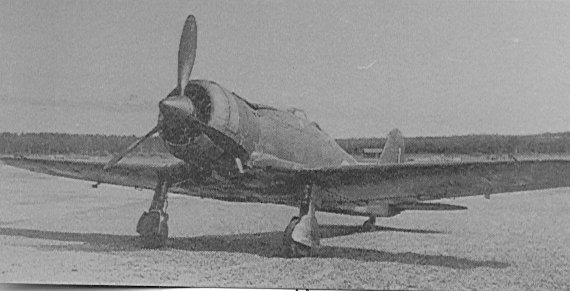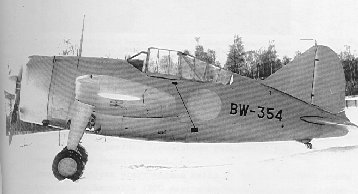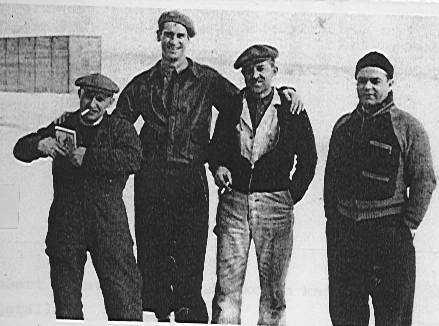Service during extra exercises and with mobilized troops

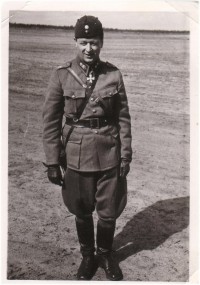
LeLv24 commander Gustaf "Eka" Magnusson.
|
I reported for duty in HLeLv. 24 (fighter squadron 24) on 18.6.1941. There I performed ground shooting-, patrol flight- and aerobatics exercises, a climb test to 5000 meters (16700 feet), one hour patrol flight in a group of eight planes and a half-hour radio test flight with the Brewster on 24.6.
25.6.1941 we flew the first three search flights with Brewsters within two hours and at altitudes of 2400 - 4500 meters (8000 - 15000 feet). 28.-29.6 we also flew three intercept flights against Russian planes at altitudes of 1000 - 3400 meters (3300 - 11300 feet) and within 4½ hours.
29.6. our schwarm (1/24) of four planes under the command of lieutenant Olli Mustonen was transferred to Vesivehmaa Mikkeli airfield to protect the headquarters. Between 30.6. and 6.7. we were sent on several intercepts utilizing the alarm principle. The altitudes varied between 500 and 4000 meters (1670 - 13300 feet). 8.-14.7.1941 we flew five about 1 to 1½ hour search flights and three 20-minute intercepts based on alarms.
On 14.7. I was with my patrol pair corporal R. Malin ordered to Nummela airfield. Our duty was to protect the field hospital at the Hanko front against attacks of Russian airplanes. On midday of 15.7. I flew a one-hour reconnaissance flight over the northern part of Hanko peninsula at an altitude of 3000 meters (10000 feet). Between 15:00 and 16:30 I flew a cover flight at 6000 meters (20000 feet). No Russian planes were sighted on these flights. The next night we received an alarm and climbed to 1000 meters over the area to be covered. There we intercepted one attacking plane and I got a chance to fire long bursts at it from behind. At that time my plane was suddenly hit and got about a football-sized hole in the left wing, between the ammunition box and fuel tank. Because of this I returned to Nummela airfield. Later we got information from the coast guard that the plane I had fired at had crashed into the sea. On the 16th our patrol flew back to Mikkeli.
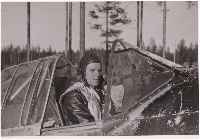


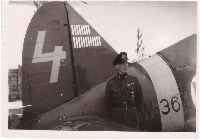
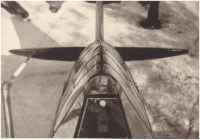
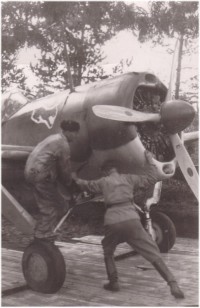

1/HLeLv 24 flight commander Eino Luukkanen, who later became commander of HLeLv 34.
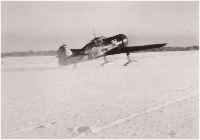
Fokker D.XXI
|
As a clarification I should mention that our front-line flight of 16 pilots normally always had eight planes ready for scramble and either the flight leader's or deputy leader's pilot groups were on call. In the next account when I'll use expression 'our flight' I mean the pilot group that participated in the front-line action and whose leader I was.
18.-19.7. after our flight had been transferred back to our squadron we participated in three aerial combats against the fighters escorting Russian bombers that were attacking Sakkola. Between 19.7. and 1.8. our flight flew 10 intercept-, escort- or search missions at 4000 meters. The flights reached as far as Käkisalmi and Römpötti.
1.8.1941 I was assigned to Fighter Squadron 25 (HLeLv 25) where until 20.9. I flew about 30 hours with GT-, TU- and PY-planes.
20.9. I was assigned back to my old flight 1/HLeLv 24, now led by Captain Eino Luukkanen, which had transferred to the captured Nurmoila airfield. Between September 26 and October 7 our flight flew several search- and escort missions while the infantry was crossing Syväri. On 7.10. our flight shot down one DB and one SB. Between 9.10. and 25.10. we flew reconnaissance missions around Vytegra and escorted FK reconnaissance planes. We also flew search and intercept missions and the total flying time in October was 22 hours. In November the enemy flight activity was very low, I myself participated in only one reconnaissance mission, two weather flights and one search mission. In December I also flew just one FK escort mission, a couple of search missions and one reconnaissance mission to Osta.
After the beginning of January in 1942 enemy air activity increased again. Therefore in January and in the beginning of February our flight flew search and intercept missions almost daily, reconnaissance missions to Osta, Aleksevskaja, Krestnojärvi, Monestirskaja and Lotinanpelto. We also flew escort for FKs, covered infantry and transports.
During the last week of April our flight flew search reconnaissance missions around Lotinanpelto - Uusi Laatokka - Laatokka - Tokarevo. In May we flew on consecutive days 9.5. - 15.5. about two-hour missions covering infantry, reconnaissance missions around Rebrovo and Gruchino. We flew also six intercept missions and one Blenheim escort mission. 30.5. our flight flew to Hirvas airfield.
On June 1st while I was the acting deputy commander of 1/LeLv 24 I received an order by telephone, that I should send two Brewsters to Malmi to escort German transport planes between Immola and Malmi. At 16:35 that same day I and ltm. Veikko Rimminen departed for Malmi where we landed at 18:35. From the Air Force HQ I got an information, that I would get two more Brewsters as reinforcement. They also came to Malmi, one piloted by H. Wind and the other, if I remember correctly, sergeant T. Järvi.
On June 4th we were notified that the planes to be escorted were approaching and we took off at 12:05. When the escortees were above Malmi I and Rimminen started to follow them. I could not see the other BW patrol. While the flight continued towards Immola the cloud cover got lower and lower all the time. Wind asked for a permission to land to Vesivehmaa with his wingman because of bad weather. I gave him the permission since the cloud cover was yet lower and it seemed that he did not have visual contact to us or the transports. I told him to follow us to Immola if the weather improved.
While the flight progressed the weather got so bad that it was hard to keep both transports in sight at the same time and Rimminen as an experienced pilot suggested that each of us would follow just one plane. We continued to Immola this way. At the airfield I lost sight with the other planes and to reduce the risk of collision I decided to land on the short crossing runway. After I landed at 13:25 I watched the landing of one of the transports. As the heavy plane was braking heavily, it looked like the brakes were smoking. I was waiting by my plane when major Carlsson approached me and asked why I hadn't come to report to Hitler after the escort mission. It was only at this point when I found out who had been in the planes that we were escorting. During meal I was sitting by a German officer who I had been told was the pilot of Hitler's plane. During our discussions he did not mention any problems while approaching the airfield. When the weather later improved, also Wind's patrol was able to fly to Immola.
The escort mission from Immola to Malmi was normal, weather was good and all four Brewsters were escorting. We took off from Immola at 18:30 and when we came to Malmi, German fighters were in the air waiting to take over the escort duty. We landed at Malmi at 19:30.
The next day we returned to Hirvas from where we were ordered to Suulajärvi on 11.6. From there we flew three intercept and search missions on the same day 13.6. and during the next days 14.-18.6 five intercept and search missions and one escort mission during which we damaged one PE-2 -plane. In July the enemy's air activity increased and as a result we flew 19 intercept- and infantry covering missions around Someri and a BARCAP mission at Lavansaari. During these missions we participated in four aerial combats with I-16 -planes. On August 7th our flight was transferred to Römpötti. From there we flew 14 search and intercept missions, an escort mission for BL at 5500 meters (Valkeasaari) and participated in two aerial combats at Kronstadt and Kreivilahti destroying one I-16 fighter. September, October and November were quite calm for our flight. During these three months I flew three intercept missions, four search missions near Seiskari and Tolli, one escort mission for a BL and one reconnaissance mission to Ontajärvi. At Tolli our flight shot down one HC fighter in a battle that was fought on 25.10. My total flying time during these three months was about 25 hours.
On 14.12.1942 I was transferred to the squadron of the Air Academy (Le.SK) where I got familiar with PY and JF planes, practised aerobatics with VI- and PY-planes and flew one-hour training flights in the clouds with flight students V. Hellens and Aapro in a Tuisku. The squadron commander was V. Savolainen.
12.2.1943 I was transferred back to 1/HLeLv. 24 where the flight leader was my course mate from RUK-4, Jorma Sarvanto.
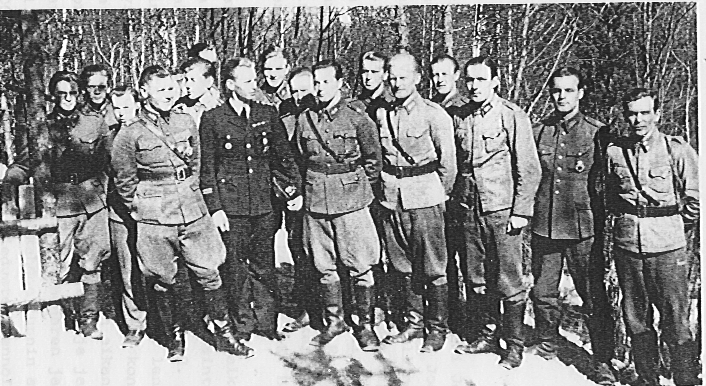
1/HLeLv. 24: Front row from the left: Captain Jorma Sarvanto, lieutenant Hans Wind, reserve lieutenant Joel Savonen, Warrant Officer Viktor Pyötsiä, sergeant Pellinen, sergeant Kalevi Anttila and reserve lieutenant Kai Metsola. In the back from the left: Second lieutenant U. Viinikka, reserve second lieutenant Mikko Pasila, sergeant Lehtovaara, reserve second lieutenant Cke Roos, reserve second lieutenant Kim Lindberg, sergeant Saukkonen, staff sergeant Aimo Vahvelainen, sergeant J. Lilja, sergeant E. Hällfors.
On the last days of February and early March I participated in BL escort missions, five search missions and two reconnaissance missions. Between April 12th and 19th we flew 8 search missions and 18.4. our flight destroyed two Yak-1 -planes in aerial combat and one PE-2 the next day. In May we flew numerous intercept-, search- and escort missions and participated in aerial combats near Seiskari, Lavansaari and Tytärsaari. On 21.6. we escorted for two hours a BL flying a reconnaissance mission above the front at 6000 meters (20000 ft).
In June we flew eight search- and intercept missions and two BL escort missions. In July we flew five search- and intercept missions and on the eighth we escorted a BL which was directing artillery fire. In August we flew eight intercept missions. On 20.8. our flight shot down one LaGG-3 fighter in an aerial combat which was fought at 4500 meters (15000 ft).
In September we flew four intercept missions, during which our flight fought two aerial combats and shot down one LaGG-3 fighter. On October 9th we escorted BL-bombers twice when they were flying reconnaissance missions in the area of Kronstadt - Toksova at 8000 meters (26700 ft), first at noon and again three hours later. In November we flew four intercept- and three BL escort missions during which our flight damaged two LaGG-3 and one Yak-7B fighters in aerial combats that were fought at 8200-8500 meters.
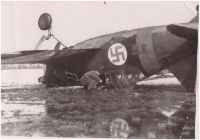
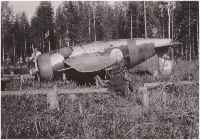
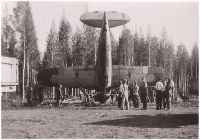
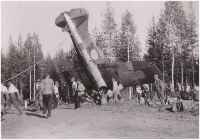
Accidents happen. Leftmost plane BW-371 after landing to a rainy, soft field. Other pictures show BW-375, Joel Savonen's usual plane. He scored five and 1/2 victories in BW-375.
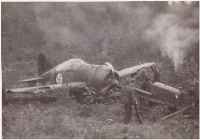

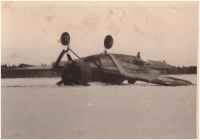
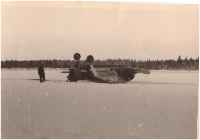
Brewsters in various accidents. Plane numbers not known.
December 1943 and January 1944 were quiet. In late March we flew three intercept missions, two BW escort missions and one reconnaissance mission.
In the end of March the first German Messerschmitt Bf 109 G-2 (Editor's note: At Savonen's text the plane is described as G-6. But MT-226 was a G-2 and the plane in German markings seems to be G-6, for example lacking the machine gun humps in the nose) fighter landed at our base, piloted by Oberleutnant H. Götz.

The commander of our squadron, captain Eino Luukkanen and oberleutnant H. Götz in front of the plane.
The serial number of the plane was MT-226. On 29.3. after captain Luukkanen and Oberleutnant Götz had briefed me about the technical- and flying characteristics of the plane, I flew a 35 minute familiarization flight at 700 meters and made one landing. I had no problems whatsoever, the plane was easy to fly and I had no trouble in landing.
I still flew with Brewster on 30.3. and 2.4. I flew one reconnaissance- and three intercept missions and on the last mission we got into an aerial combat and our flight damaged one LaGG-3 plane. According to my flight log I had flown 379 hours with Brewsters so far.
Starting on April 5th our flight led by captain A. Lassila flew with MTs. In April I first did some landing practice with MT-207, then turning exercises and climb test to 7000 meters (23300 ft) with MT-225. On 13.4. and 26.4. we were escorting photo reconnaissance BWs that flew at 4500 and 4000 meters. I also flew 20 - 30 minute test flights with MT-216, MT-231 and MT-235 and two reconnaissance missions. On 7.5. we were escorting BWs for an hour between 12:00 - 13:00 and flew an intercept mission between 15:00 and 15:40. On 8.5. we flew a search mission to Motti at 5000 meters (16600 ft). On 25.5. we flew two intercept missions and on 26.5. we flew from Suulajärvi to Nurmoila. On 28.5. we flew a one-hour intercept mission during which we participated in an aerial combat at 5000 meters. During 3.-4.6. we flew two intercept missions and in the evening we flew from Nurmoila to Immola. On 9.6. we first flew a 40-minute intercept mission and immediately after landing another alarm was made. Right after we got airborne we found ourselves in an aerial combat. Between 11.6. and 21.6. we flew six intercept- and two reconnaissance missions and during those missions took part in three aerial combats.
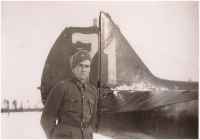
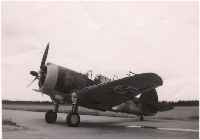
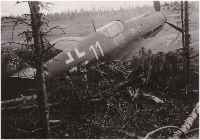
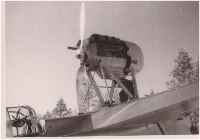
After this I was sent to Germany to pick up new Messerschmitt Bf-109 fighters from Insterburg. On 25.6. at 16:15 I took off from Insterburg airfield in the first MT and after flying below 200 meters (660 ft) I made a stop at Riika where I landed at 17:15. From there I took off at 18:40 and after continuing below 200 meters I landed at Malmi airfield at 19:55. On 26.6. I took off from Insterburg in another MT and again flew to Riika below 200 meters. I landed there at 20:25. When I was about to continue to Malmi, I taxied to a bomb crater that had not been properly filled with sand. One gear of the MT sank into the soft ground and the tail rose high and then dropped down so that the fuselage of the plane bent. A German lieutenant approached me with a couple of riflemen and took me to their post. I got permission to telephone the Finnish Air Force headquarters for instructions and the German lieutenant made contact with major Pauli Ervi who was acting as a liaison officer in Germany. After I explained him what had happened to the plane he asked to speak to the German lieutenant. After a few minutes the German lieutenant gave back the phone and Ervi told me that a German general who was inspecting the German northern army happened to be in Riika and had promised to take me in his plane to Jurgenfeld airfield, which was near Insterburg. In about half an hour I climbed into a staff Heinkel, introduced myself to the general and sat into a comfortable leather armchair. The plane took off immediately.
While I was talking with the general I told him that I had been escorting planes carrying Adolf Hitler and field marshal Keitel on their way to congratulate marshal Mannerheim on his 75:th birthday with four American Brewster fighters and that I had received a German medal "Das Verdienstkreutz des Ordens vom Deutchen Adler Dritter Stufe mit Schwertern" for this in front of a Finnish guard company.
I also told him that during winter war I had been in Sweden many times picking up English and American fighter planes. The general asked me about how Swedish officers felt about the current situation in Lapland. Of course I had no up-to-date knowledge about this, but I mentioned that the Swedes had participated in battles that were fought in Lapland during winter war and had made a significant contribution committing whole infantry- and air force units.
After we landed to Jurgenfeld and I was leaving the plane, I heard the general tell to a major who was waiting for us that he should fullfill all wishes of this Finnish Lieutenant. After the general had left the major asked me what I wanted. I asked for transportation to Insterburg and some cigarettes. I got a packet of 400 Bulgarian cigarettes and a bottle of wine and my transportation to Insterburg airfield was arranged in a Fieseler Storch. From there I received a new Messerschmitt Bf-109G fighter, equipped with an extra fuel tank. I took off from Insterburg at 18:00 and again flew below 200 meters over the Baltic Sea to Malmi where I landed at 20:00.
Between July 2nd and July 22nd the enemy air activity was very high and therefore our flight flew intercept missions on nine days. On seven days we escorted BL's and JK's, covered infantry on six days and flew reconnaissance missions on six days.
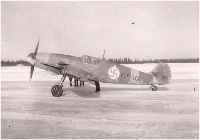
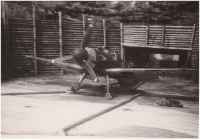
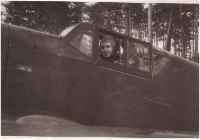


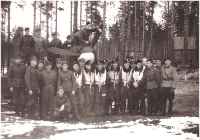
At the end of August I was again ordered to Insterburg, Germany. In Germany on 23.8. at 10:40 - 11:00 I flew a test flight with a new Messerschmitt Bf-109 G fighter at 1000 meters (3300 ft) and 15 minutes after landing I departed to Riika airfield in the same plane. I followed my orders which stated that altitude should be kept at about 50 meters and landed in Riika at 12:50. From there I took off the next day at 16:10 and flew at 50 meters to Malmi where I landed at 17:25. On 25.8. I flew my plane to Kuorevesi.
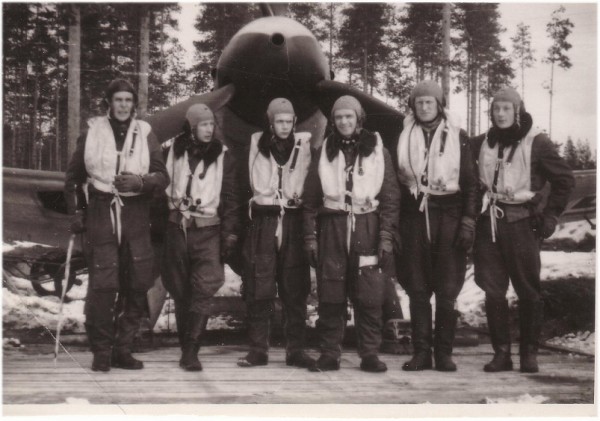
Pilots of 1/HLeLv 24 at Suulajärvi, April 1944. From left: 1Lt K. Metsola, Sgt. A. Koskelainen, 1Lt M. Pasila, 1Lt L. Nissinen, WO Viktor Pyötsiä and 2Lt H. Lampi.
I was discharged on 10.11.1944 following the general demobilization. After the control commission had taken Malmi airfield into it's use I was transferred to Hyvinkää airfield as an air traffic controller.
In the middle of February 1945 I received a call from Malmi airfield and I was asked if I could take in a passenger plane that was coming from Sweden and could not land at Malmi because of bad weather. The weather was good at Hyvinkää so I said yes. After that I got a call from the ministry of foreign affairs and I was told that the representative of USA, secretary Maxwell Hamilton and his wife were passengers on that plane. I was also ordered to escort them to Helsinki. I asked for transportation from the rural police office and they told me that they only had one wood-gas car and even that was out of the office. After that I called the station master of Hyvinkää railway station and asked when was the next train to Helsinki. He told me that the next passenger train was coming after two hours. After I explained the situation to the station master I asked him to empty a comfortable compartment of the train for the guests after it arrived. Then I contacted the ministry of foreign affairs and told them about the situation. They advised me to arrange a possibility for a meal for the waiting period. Near the station at the other end of a bridge there was restaurant Ahjo where suitable service was available. After the plane landed we drove the guests with the airfield ambulance to restaurant Ahjo. After the meal I walked over the bridge to the railway station with our guests and when the train arrived we got into the compartment that had been reserved for us.
On our way to Helsinki I told the guests about how the Finns felt about the things that our eastern neighbour had forced on us. Transferring of 400000 people from Karelia from their homes and jobs, disposition of large land areas and the huge reparations that were ordered to be paid by the country that had been attacked. When the train arrived in Helsinki the Russian leadership of the control commission was there waiting for Hamilton.
In about two weeks a driver from the US embassy showed up at our home and brought a polite invitation signed by Julia Hamilton to arrive to five o'clock tea the next day with my wife. A car from the embassy picked us up at the appointed time. The discussions with secretary Hamilton showed that his views on Russians and communism in general differed from Finnish views which he indicated by saying that "You Finns know them better since you live near them". Secretary Hamilton mentioned that my wife and I were the first Finnish guests they had invited to the US embassy.
After the control commission banned also the flights of Finnish airliners I asked for a permission to resign from my job as an air traffic controller and it was approved.
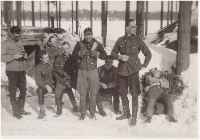
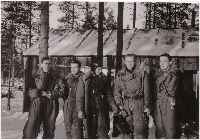
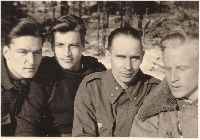
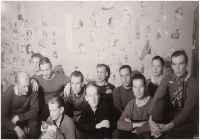





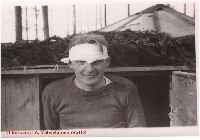 Bottom row, rightmost photo: Master Sergeant A. "Vaffe" Vahvelainen.
Bottom row, rightmost photo: Master Sergeant A. "Vaffe" Vahvelainen.
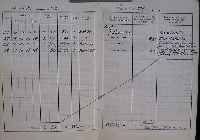
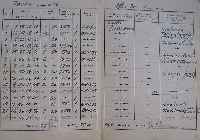
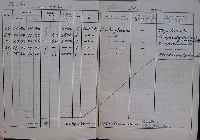
Joel Savonen's logbook entiries April-June 1942. Including the historical Adolf Hitler escort mission.
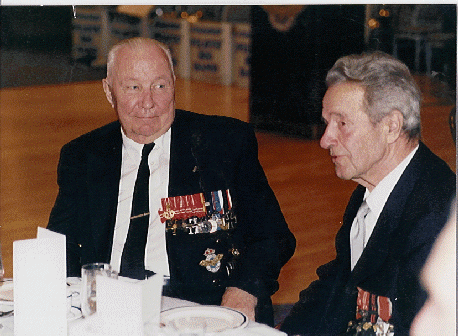
The author with Illu Juutilainen at Kalastajatorppa in 1996.
Joel Adiel Savonen
Born 22.8.1914
Units: 20.12.1939 LeLv 26 - 18.6.1941 LeLv 24 - 2.8.1941 LeLv 25 - 21.9.1941 LeLv 24 - 15.12.1942 LeSK - 13.2.1943 LeLv 24 flight leader . Returned to civilian lize 10.11.1944.
Honors: VR4, VR3.
Victories:
16.7.1941 - BW-361 - 1 I-16
6.10.1942 - BW-362 - 1/2 SB-2bis
25.10.1942 - BW-375 - 1 Hurricane
18.4.1943 - BW-375 - 2 Yak-1
19.4.1943 - BW-375 - 1/2 Pe-2
20.8.1943 - BW-375 - LaGG-3
28.9.1943 - BW-375 - 1 LaGG-3
17.6.1944 - MT-235 - 1 MiG-1
| 
